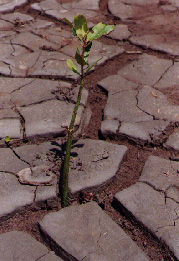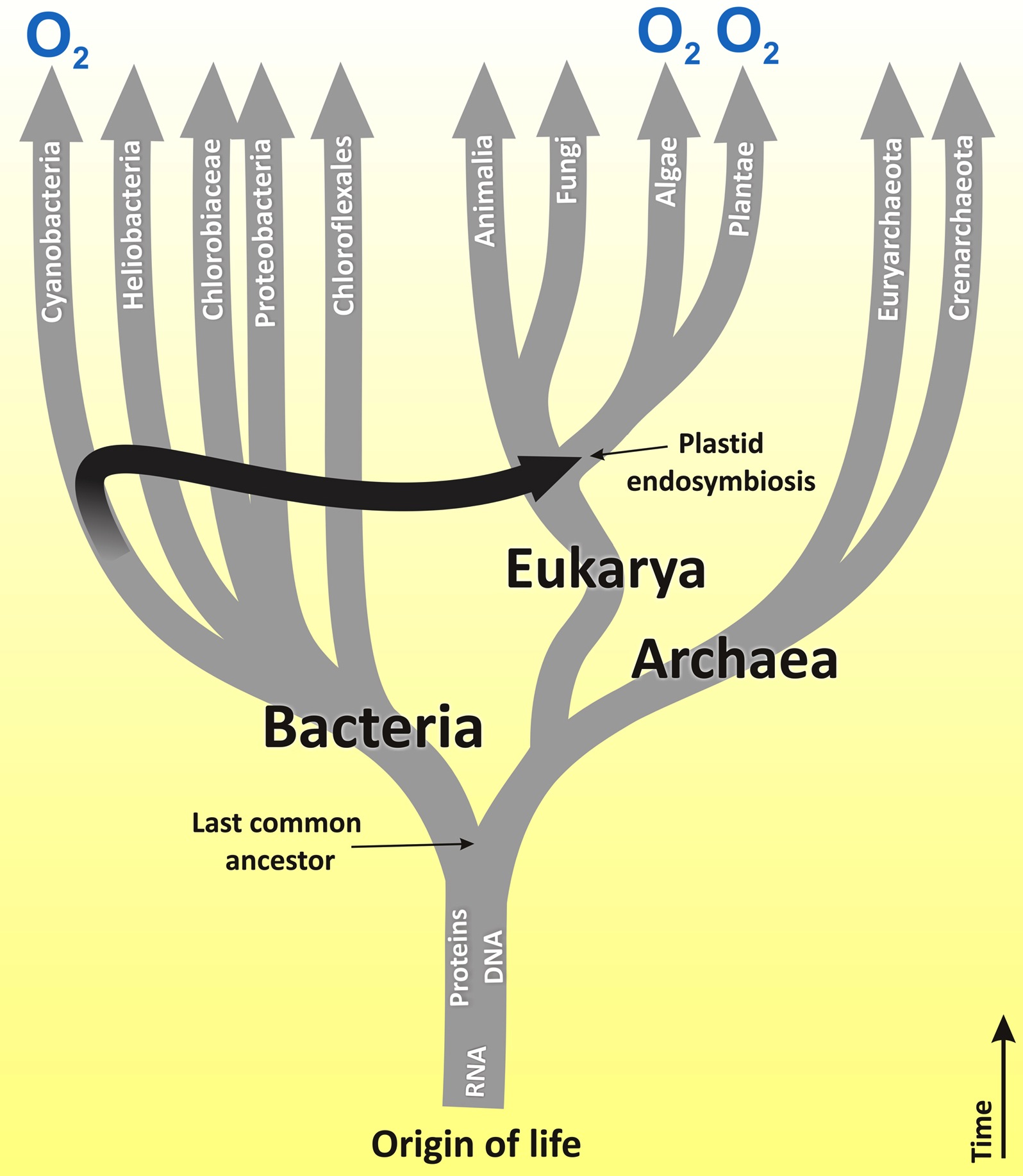
"one must always strive to distinguish bullshit from authenticity."
![]()
contents | personality | questions | building blocks | methods | evolution | diagram | SET | conclusions
![]()
1. There is a lack of awareness, but "Symbiosis is nonetheless crucial to an understanding of evolutionary novelty and the origin of species.
pp. 5-6.
2. Evolution is the most important scientific concept but why are chromosomes in some organelles?
pp. 17, 19-21.
3. Merger of organisms evidence of which is in the organelles and DNA sequences, means fusing rather than branching among eubacteria.
pp. 34-41.
4. "Faulty taxonomics misleads..." as Bateson argues "the map is not the territory," suggesting that the origins of the two, three and five kingdom systems are arbitrary if not tied to genetic criteria.
pp. 52-68.
5. All living beings share common traits (cytochrome C - respiratory and metabolic pathways), self-maintenance and reproduction are similar, nutrition is how they diverge sharing RNA-DNA based means to forestall the dissipation of heat.
pp. 70-79.
6. the recombination of genes (sex or reduction division) is rather new and accounts for "Programmed death is a nonnegotiable consequence of the sexual mode of life."
pp. 90-101.
7. "An ecosystem is the smallest unit that recycles the biologically important elements" and ecosystems lead to the conclusion that without symbiosis of algae and fungi there would have never been land plants, forests or sufficient oxygen on Earth to sustain us.
pp. 105-110.
8. "Proprioception …incessantly inform us …work as sensory systems" …and the Earth has analogously a form of regulatory systems to moderate the otherwise wildly unsustainable fluctuations in temperature that are not accounted for by physical and chemical realities.
pp. 113-120.
8.1 "We people are just like our planetmates."
p. 128.
9 The five kingdom system of Prokarya and Eukarya the great divisions of natural history and life on earth.
p. 129.
contents | personality | questions | building blocks | methods | evolution | diagram | SET | conclusions
Concepts:
1. "The move toward evolution based classification systems" reveal "Bacteria evolved first."
2. Some organisms live together, that is their genetic future depends on each other cooperating; they possess shared destinies.
3. Fusion the idea that some creatures, upon ingesting their neighbors or competitors retain some of the structures in their bodies as functional parts.
![]()
contents | personality | questions | building blocks | methods | evolution | diagram | SET | conclusions ![]()
My life, personalizing the intellectual past.
Her family, son's question influenced the book.
pp. 2,3,4.
Her training, University of Chicago and CAL, Berkeley.
p. 13-21.
Her marriage, (1957) to Carl Sagan
p. 16.
Her educational maturity
pp. 13-24.
"evolutionists, even those long dead, exerted a spell over me from my first encounter with their work."
p. 24 .
"one must always strive to distinguish bullshit from authenticity."
p. 16.
KEY
Science and Philosophy
"There science facilitated the query of profound questions where philosophy and science must merge:
![]()
contents | personality | questions | building blocks | methods | evolution | diagram | SET | conclusions ![]()
Building blocks of doubt, obstacles, or anomalies that gave rise to an opportunity for a radically different hypothesis about competitive evolution:
[on Morowitz' contributions to evolutionary biology]. in Margulis, p. 79.
![]()
contents | personality | questions | building blocks | methods | evolution | diagram | SET | conclusions ![]()
The means or method of determining verity:
"distinguishing [lumpers vs. splitters]
Realization [analysis and synthesis]
experiments" [testing assumptions]¶ 2&3, p. 23.
"The body of coherent science produced by the U.S. school of geneticists in the first half of the twentieth century gave me a sense of history of biological --especially genetical-- thought"
"From the beginning the need for chemical explanation was clear."
24.
![]()
contents | personality | questions | building blocks | methods | evolution | diagram | SET | conclusions ![]()
"Evolution is simply all history."
"change through time...the convoluted history of which we are the living legacy"
"Nothing in biology makes sense except in light of evolution." Theodosius
Dobzhansky
p. 24.
"mysterious genes outside the nucleus."]
p. 24.
"Experiments described by these authors showed that two kinds of organelles,
membrane-bounded structures inside cells but outside the nucleus, plastids and
mitochondria, had significantly affected heredity."
p. 25.
"It seemed obvious to me that there were double inheritance systems with cells
inside cells."
25
"Library sleuthing," Uinversity of California, Berkeley (Cal)
p. 29.
Her contribution to evolutionary science is:
"The Origin of the Eukaryotic Cell"
p. 31-32
Here Prokarya are discerned as different from Eukarya as the two basic divisions of life on earth.
| group | Prokarya | Eukarya |
|---|---|---|
| characteristics | ||
| meaning | original form | well formed |
| funtional ribosome | RNA has a Shine-Delgarno unit | RNA is different |
| mass | very small | many times larger |
| segregation | no self-contained central mass | a well confined nucleus |
| chromosomes | hereditary material in the cell | hereditary material confined |
| sub-units | organelles are not essential | organelles are essential |
Eukaryot– The second of two great domains of living things into which life is divided based on the location of chromosomes or genetic evidence, functional criteria, means of reproduction and behavioral traits; containing bacteria, fungi, plants, and animals.
Also spelled eucaryotic the term refers to creatures that are single or multicellular, possess a wll defined nucleus with a porous membrane separating the inheritable material or DNA from the cytoplasm (body fluid) of the cell, possessing microtubules, reproducing by means of a mitotic spindle, housing diverse organelles some of which have their own forms of DNA, and having well articulated ribosomes for building proteins.
Prokaryot– The first of two great domains of living things into which life is divided based on genetic evidence, functional criteria, means of reproduction, simplicity of form, and identifiable behavior.
Also spelled procaryotic the term describes organisms based on genetics that are often single cells or colonies that have single strands of DNA (inheritable material) without necessary protein components and not restricted to the central walled-off nucleus of the cell. Such creatures do not possess specialized organelles called mitochondria for respiration, nor chloroplasts for photosynthesis. They reproduce differently from their eukaryotic cousins.
Animals
Plants
Fungi
Protoctista
Monera
origins ?
SET is
Serial Endosymbiosis Theory
SET attracted experimental contributions of many scientists....the idea that the cells of plants and of our animal bodies (as well as those of fungi and all other organisms composed of cells with nuclei) originated through a specific sequence of mergers of different types of bacteria. Joint residence prevails and proliferates.
p. 30.
"Taxonomy is the science of identifying, naming, and classifying organisms ....Taxonomies like maps, bring into relief selected distinguishing features."
(page 51.)
Taxonomy: compare this older version of the tree of life with her description on p. 129.

![]()
contents | personality | questions | building blocks | methods | evolution | diagram | SET | conclusions ![]()
SET is a theory of coming together, of merging of cells of different (lineages)
histories and abilities."
"Before serial endosymbiosis and the establishment of
the aerobic nucleated cell, no cell fusion existed. Meiotic sex, like that of
the egg fertilized by the sperm, came later. Serial endosymbiosis made our kind
of fusion sex possible."
page 32.
 Above are four schematics –or images that convey meaning– based on genetic discoveries revealing an imagery of different ways the tree of life may have flourished since it sprang, rooted in the earth, from the primordial conditions of our prehistoric past.
Above are four schematics –or images that convey meaning– based on genetic discoveries revealing an imagery of different ways the tree of life may have flourished since it sprang, rooted in the earth, from the primordial conditions of our prehistoric past.
More on symbiotic associations?
![]()
contents | personality | questions | building blocks | methods | evolution | diagram | SET | conclusions ![]()